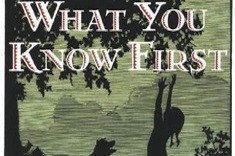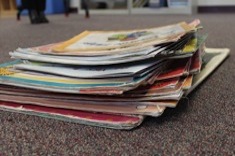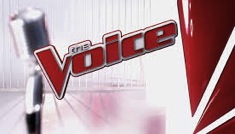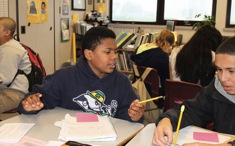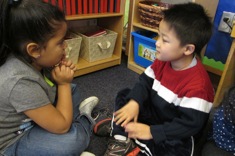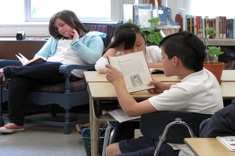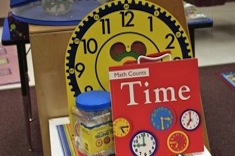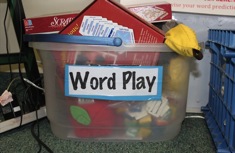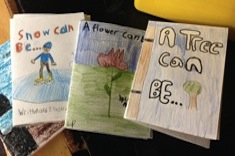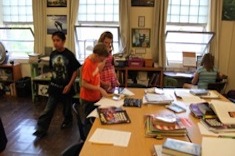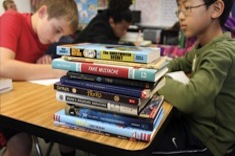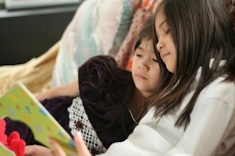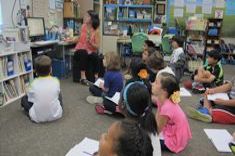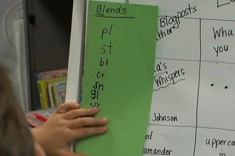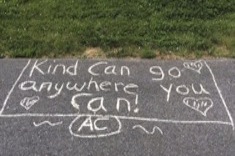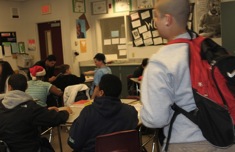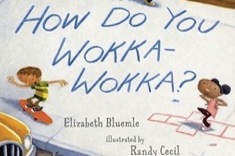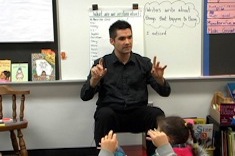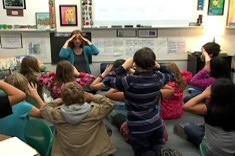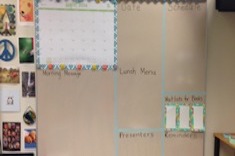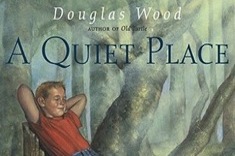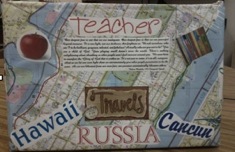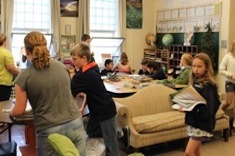Community Building
It's one of the big paradoxes of literacy instruction - students best learn how to read and write independently when they have a strong community of support in classrooms. How teachers build those thoughtful, kind, and challenging classroom communities is explained in these resources.
Latest Content
Closing the Year and Making Space to Remember
Jan Burkins and Kim Yaris explain how ending the year is all about making space for memories, and provide some texts to help in the process.
Using Picture Books to Foster Resilience
Gigi McAllister uses picture books to strengthen her fourth-grade classroom community.
Celebrating “The Voice” of Writers
Melanie Meehan presents a fun activity for late in the school year that uses the format of The Voice television series.
Group Composing
Gretchen Schroeder finds group composing is a fun way to build community, writing skills, and understanding of how arguments work with her high school students.
How to Speak “Friend”
Melissa Kolb shares some of her favorite mentor texts for helping preschoolers understand friendship.
Releasing Responsibility
When it comes to producing independent readers and writers in classrooms, it’s all about the language we use. Debbie Miller has practical suggestions for bringing out the best in children.
The Secret to Productivity: Hard Work or Play?
Jan Burkins and Kim Yaris connect their own working lives to those of students, and consider the value of play.
Three Classroom Games for Literacy Learning and Laughter
Melanie Meehan suggests some favorite classroom games for building literacy skills.
The Secret to Magical Author Visits
Prolific children’s book author Laura Purdie Salas explains why you should treat visiting authors like rock stars, with many tips and examples from her writing friends.
Classroom Management and Student Responsibility
Katherine Sokolowski is discouraged when she observes that some students are off-task during literacy workshops. She decides a reflection sheet will be a useful weekly scaffold to support independent monitoring of behavior.
Shallow Books? Learning from a Reading Celebration
Franki Sibberson discovers we allow students to assess what reading matters most to them, we can learn a remarkable amount.
Multicultural Series Books
Shari Frost is alarmed when she realizes how rarely children of color are represented as main characters in book series. She decides to compile a list of multicultural series books.
Infusing Informational Texts into Morning Meetings: Fact of the Day and Daily News Routines
Andrea Smith explains two routines, Daily News and Fact of the Day, which are key components of her morning meetings.
The Weight of Stories
Some of our students lead such hard lives. Christy Rush-Levine explores how teachers can keep from being dragged into the undertow of the most difficult situations children face.
The Power of Reading Habits
Gretchen Taylor’s overscheduled middle school students have almost no time for reading outside the classroom. She finds that some reflective inquiry helps them build reading habits at home.
Student-Generated Blends Chart in First Grade
Katie DiCesare’s first graders add to a blends chart during reading transition time.
Spreading Out the Fun
Why save all the most enjoyable literacy activities for May or June? Gigi McAllister spreads out the fun all year long with literacy events and activities to break up routines.
What Kenny Taught Me
Jennifer Schwanke has a student who just won’t sit still and behave appropriately in her middle school classroom. She finally gives up. That’s where the learning begins.
Books for Brain Breaks
Mandy Robek compiles a list of her favorite books for brain breaks with young learners.
Quick Transitions in Second Grade
Sean Moore demonstrates two different quick kinesthetic movements to help his second-grade students focus and transition between whole-class instruction segments.
Independence in Writing Workshop
Beth Lawson uses an LCD, whiteboard, and magnetic clips in a clever way during the transition from minilessons to independent writing in writing workshop. Students tag whether they will be working on drafts or conferring with peers as Beth completes her status of the class on the board.
Community Board: Invitations to Independence
Students transition between home and school with the Community Board in Andrea Smith’s classroom. It’s a lively bulletin board that is updated and discussed daily in her fourth-grade classroom.
A Strong Foundation: Books and Media for Launching Literacy Workshops
Help students transition back to school with minilessons that give children a strong sense of the purpose of literacy workshops.
Getting to Know You: Brown Bag Objects
Maria Caplin uses a getting-to-know-you activity in the first days of school to jumpstart research reading and writing with her fifth-grade students.
Shoebox Autobiographies
Susan Dee uses shoebox autobiographies to build community and relationships with students early in the fall.
The Case Against Management Systems
Katherine Sokolowski advises teachers to ditch the search for the perfect management system, and instead focus on building relationships early in the school year.
First Shared Text: Fishing for Many Meanings with Adolescents
Christy Rush-Levine introduces her middle school students to the complexity of reading on the first day of school.
“I Used To, and Now I”: An Early Year Minilesson
Franki Sibberson finds an “I Used to and Now I” format helps her third-grade students understand how technology is changing reading habits.
Six-Word Memoirs
Gigi McAllister finds the ever-popular six-word memoirs are a wonderful way to build community and help students get to know each other.
Candy Memoirs
Gretchen Schroeder ditches the long discussion of rules and procedures with her high school students, and instead gives writing workshop a sweet start.
Browse Content By
Type
Category
- Assessment Tools
- Big Fresh Archives
- Booklists
- Choice Numeracy
- Classroom Design
- Common Core
- Community Building
- Conferring
- Content Literacy
- Digital Literacy
- English Language Learners
- Equity
- Family Relations
- Free Samples
- Guiding Groups
- Leadership
- Literacy Coaches
- Mentor Texts
- Minilessons
- New Teacher Mentors
- Podcasts
- Poetry
- Quote Collections
- Reading Strategies
- Self Care
- Struggling and Striving Learners
- Talking and Listening
- Teacher Study Groups
- Teaching Reading
- Teaching Writing
- Word Study and Vocabulary
Author
- Melissa Quimby
- Nawal Qarooni
- Gwen Blumberg
- Julie Cox
- The Lead Learners
- Hannah Tills
- Josie Stewart
- Ruth Metcalfe
- Mallory Messenger
- Becca Burk
- Jodie Bailey
- Vivian Chen
- Mary Brower
- Tiffany Abbott Fuller
- Stephanie Affinito
- Ruth Ayres
- Leigh Anne Eck
- Heather Fisher
- Shari Frost
- Julie Johnson
- Suzy Kaback
- Gigi McAllister
- Shirl McPhillips
- Melanie Meehan
- Cathy Mere
- Debbie Miller
- Tara Barnett and Kate Mills
- Tammy Mulligan
- Dana Murphy
- Bitsy Parks
- David Pittman
- Brenda Power
- Heather Rader
- Matt Renwick
- Mandy Robek
- Christy Rush-Levine
- Gretchen Schroeder
- Jen Schwanke
- Brian Sepe
- Katherine Sokolowski
- Stella Villalba
- Jennifer Vincent
Grade Level
Choice Literacy Membership
Articles
Get full access to all Choice Literacy article content
Videos
Get full access to all Choice Literacy video content
Courses
Access Choice Literacy course curriculum and training

